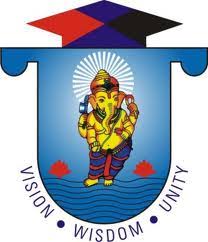Mongo DB Sort() & Limit()- Shikshaglobe

What is Query Modifications?
Mongo DB gives inquiry modifiers, for example, the 'cutoff' and 'Orders' condition to give greater adaptability while executing questions. We will investigate the accompanying question modifiers
MongoDB Limit Query Results
This modifier is utilized to restrict the quantity of reports which are returned in the outcome set for a question. The accompanying model demonstrates the way that this should be possible. db. Employee. find().limit(2).for Each(printjson);The above code takes the find capability which returns each of the reports in the assortment however at that point utilizes the limit statement to restrict the quantity of archives being gotten back to only 2.Assuming the order is executed effectively, the accompanying Output will be shown The result plainly shows that since there is a cutoff modifier, so at most only 2 records are returned as a component of the outcome set in light of the Object Id in climbing request.
Read More: Hive Partitions & Buckets
MongoDB Sort by Descending Order
One can determine the request for reports to be returned in view of rising or dropping request of any critical in the assortment. The accompanying model demonstrates the way that this should be possible. db. Employee. find().sort({Employeeid:- 1}). for Each (printjson)The above code takes the sort capability which returns each of the reports in the assortment however at that point utilizes the modifier to change the request in which the records are returned. Here the - 1 shows that we need to return the records in view of the diving request of Employee id.
What is Cursor in MongoDB?
When the db. collection. find () capacity is used to search for reports in the grouping, the result returns a pointer to the combination of records returned which is known as a cursor. As per usual, the cursor will be iterated thusly when the result of the request is returned. In any case, one can in like manner explicitly go through the things returned in the cursor separately. Accepting you see the under model, in case we have 3 documents in our combination, the cursor thing will feature the fundamental report and a short time later stress through every one of the records of the variety.
MongoDB cursor
The going with model exhibits the way that this ought to be conceivable.
First we take the result set of the inquiry which finds the Employee's whose id is more noticeable than 2 and dispense it to the JavaScript variable 'my Employee'
Next we use the while circle to rehash through the records which are completely returned as an element of the request.
Finally for each report, we print the nuances of that record in JSON clear game plan.
Accepting the request is executed actually, the going with Output will be shown
MONGODB SORT() & LIMIT() - A Comprehensive Guide to
Database Query Optimization
In today's digital age, data is a valuable asset. It's not
just about collecting data but also efficiently managing and retrieving it.
MongoDB, a popular NoSQL database, offers a powerful feature called SORT()
& LIMIT() that plays a significant role in enhancing database performance.
This article will delve into the importance of MongoDB's SORT() & LIMIT(),
explore different types, and discuss the various benefits and implications for
individuals and businesses alike.
The Importance of MONGODB SORT() & LIMIT()
MongoDB SORT() & LIMIT() is a feature designed to help
users retrieve and present data in a more organized manner. Sorting allows you
to arrange the data in a specified order, such as ascending or descending,
based on certain criteria. Limiting, on the other hand, helps in controlling
the number of documents or records returned in a query result. These functions
are essential for optimizing database queries and enhancing the overall user
experience.
Exploring Different Types of MONGODB SORT() & LIMIT()
MongoDB provides various sorting options, such as sorting by one or more fields, text search score, or even geospatial data. Additionally, it offers flexibility in limiting the number of results to be displayed, which can be incredibly useful when dealing with large datasets. Understanding these different types of SORT() & LIMIT() functionalities is crucial for effective database management.
Know More: Cassandra Interview Questions
Benefits of Pursuing MONGODB SORT() & LIMIT()
The benefits of using MongoDB SORT() & LIMIT() are
multifaceted. It not only improves the performance of your database queries but
also ensures faster response times. This is particularly valuable in
applications where real-time data is critical, such as e-commerce platforms,
social media, or financial services.
How MONGODB SORT() & LIMIT() Enhance Professional
Development
Professionals working with MongoDB, whether as database
administrators or developers, can greatly benefit from mastering SORT() &
LIMIT(). It not only enhances their technical skills but also opens up new
career opportunities. Having a deep understanding of these functions can make
one a sought-after expert in the field of database management.
The Role of MONGODB SORT() & LIMIT() in Career
Advancement
In today's competitive job market, having a strong grasp of
MongoDB SORT() & LIMIT() can be a game-changer. Many employers look for
candidates who possess the skills to optimize database queries and ensure
efficient data retrieval. It's not just a feature; it's a career asset.
Choosing the Right Education Course for Your Goals
If you're looking to acquire the knowledge and skills
related to MongoDB SORT() & LIMIT(), it's essential to choose the right
education course. Whether you opt for online courses or traditional classroom
settings, this article will help you make an informed decision.
Online vs. Traditional MONGODB SORT() & LIMIT(): Pros
and Cons
Online education has become increasingly popular, but
traditional classroom learning has its merits. This section will weigh the pros
and cons of both options to help you decide which suits your learning style and
goals best.
The Future of MONGODB SORT() & LIMIT(): Trends and
Innovations
The field of database management is ever-evolving. This
section will discuss the trends and innovations related to MongoDB SORT() &
LIMIT() and what the future holds for those who choose to specialize in this
area.
The Impact of MONGODB SORT() & LIMIT() on Student
Success
For students pursuing courses related to MongoDB,
understanding SORT() & LIMIT() is essential. This knowledge can positively
impact their academic success and future career prospects.
Addressing the Challenges of MONGODB SORT() & LIMIT()
and Finding Solutions
Every technology comes with its set of challenges. This
section will address common issues faced by those working with MongoDB SORT()
& LIMIT() and provide solutions to overcome them.
Understanding the Pedagogy and Methodology of MONGODB
SORT() & LIMIT()
To master MongoDB SORT() & LIMIT(), it's crucial to understand the pedagogical approach and the methodology employed in teaching these concepts. This knowledge will help you make the most of your educational journey.
Continue Reading: Cassandra Security
The Global Perspective: MONGODB SORT() & LIMIT()
Around the World
MongoDB is a global technology, and its applications are not
limited by geographical boundaries. This section will explore how SORT() &
LIMIT() are used worldwide, shedding light on their international significance.
MongoDB SORT() & LIMIT() for Lifelong Learning and
Personal Growth
The knowledge of MongoDB SORT() & LIMIT() isn't just
limited to professional applications. It can be a valuable asset for personal
growth and lifelong learning, enabling you to explore the world of data
management.
Funding and Scholarships for MONGODB SORT() & LIMIT()
For individuals seeking financial support to pursue MongoDB
SORT() & LIMIT() education, this section will provide insights into funding
opportunities and scholarships that can ease the financial burden.
Case Studies: Success Stories from Education Course
Graduates
To truly understand the impact of MongoDB SORT() &
LIMIT(), real-life case studies are indispensable. This section will feature
success stories from individuals who have completed MongoDB SORT() &
LIMIT() courses and transformed their careers.
Click Here
Must Know!
| Performance Bottlenecks in HBase |
| Hbase Interview Questions |
| What is MongoDB |
| NoSQL Tutorial |











